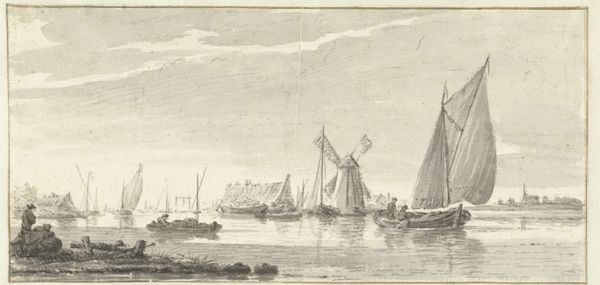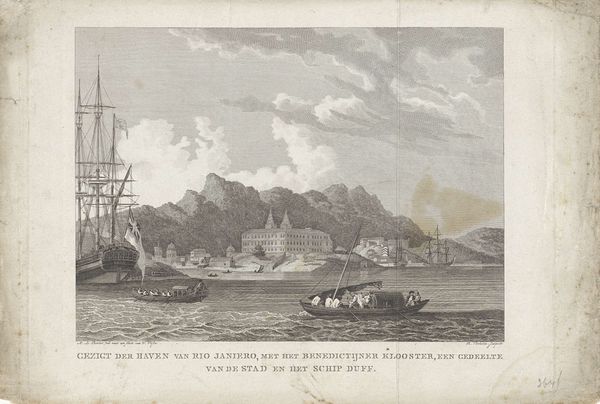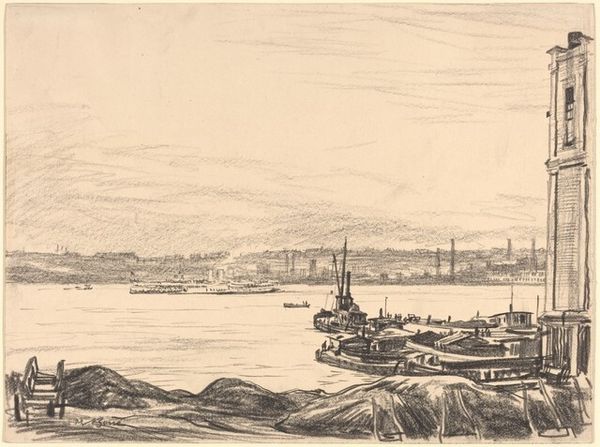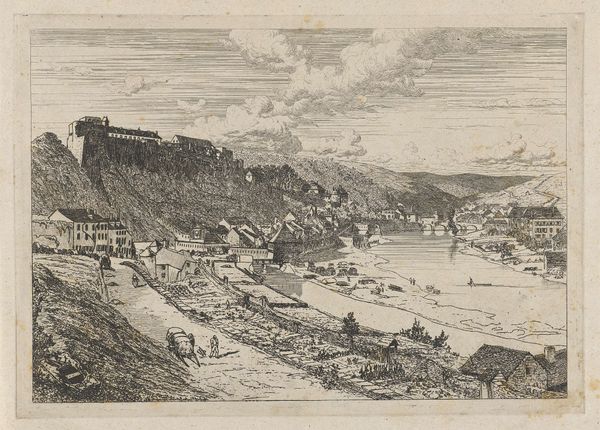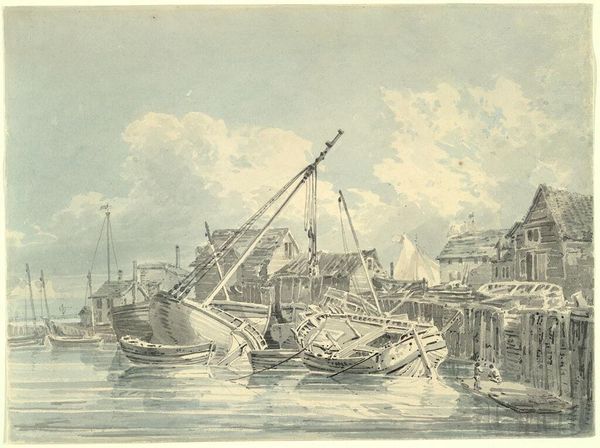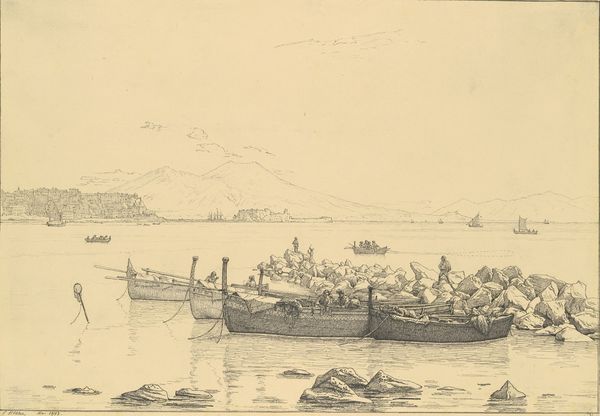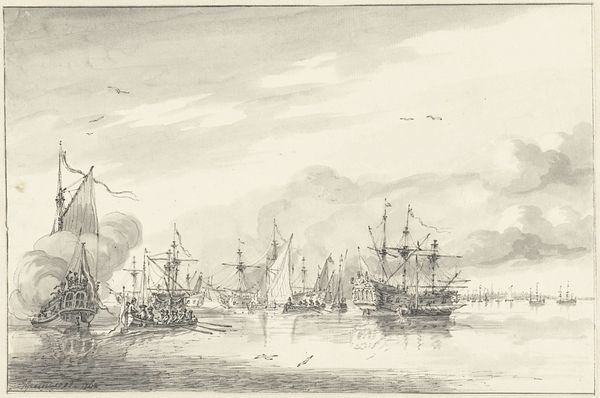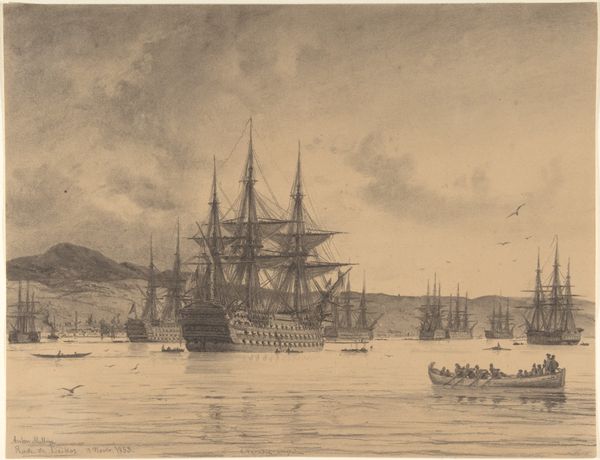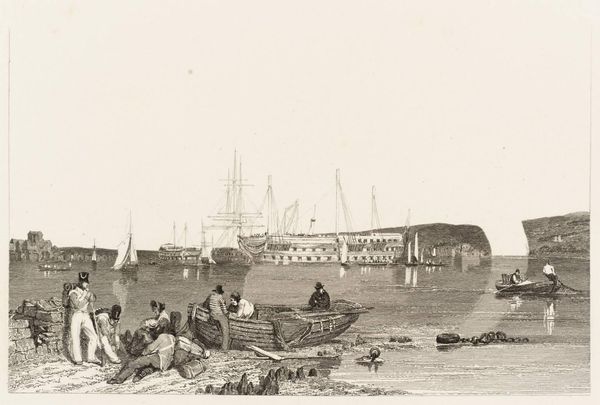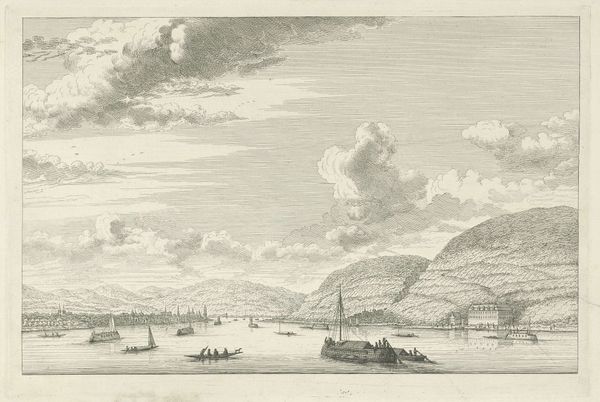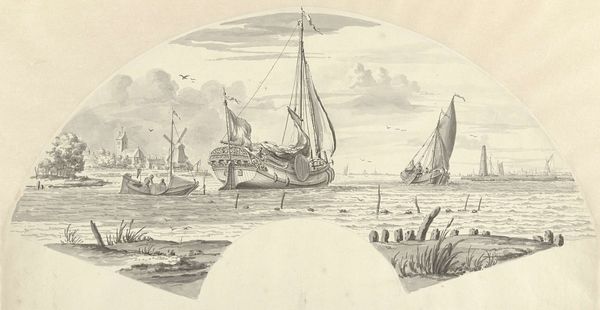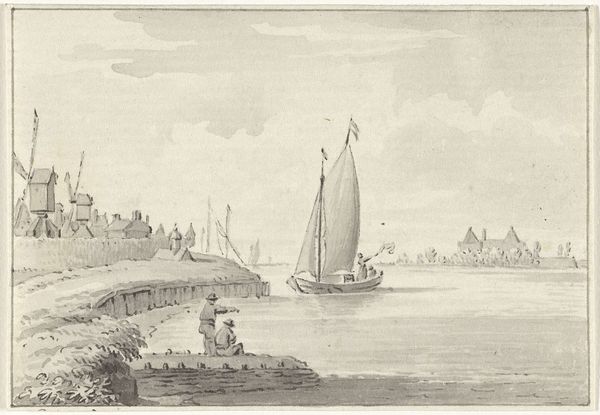
Copyright: Public domain
Editor: Here we have Giuseppe Barberis's "Veduta Del Porto," created in 1898 using pen and ink. It has such a detailed and busy feel to it, with so much activity depicted in the harbor. How do you interpret this work, especially considering its historical context? Curator: This engraving offers us a fascinating glimpse into the complexities of 19th-century port cities, far beyond a simple landscape. The density of ships, the architecture, even the lone figure in the foreground all speak to broader issues of trade, colonialism, and social class. Who is benefiting from all this activity, and at what cost? What narratives are subtly encoded into this seemingly objective depiction? Editor: So you're saying it's not just a pretty picture, but a reflection of power dynamics? Curator: Exactly. Consider the location of the viewer, perched above the harbor. Who typically occupied such elevated positions? What does that perspective allow them to see, and what remains hidden? And think about the "Orientalism" tag—how might Western audiences at the time have interpreted this "exotic" port? Editor: It’s interesting how the ‘Orientalism’ tag is used here. How can an Italian port be understood under that categorization? Curator: Often it was used for ports located in strategic maritime trade locations with ‘exotic’ aesthetic or topographic traits, at least as they might have appeared to Western Europeans during this era. Are these markers or identifiers being fetishized? Or understood for their genuine worth and value? This can all be fairly interpreted in relationship to the time period. Editor: I never would have thought of analyzing it that way. I was so focused on the artistic technique. Curator: The technique is important, but it also serves a purpose. The detailed linework creates a sense of order and control, perhaps reflecting a desire to tame the chaos of a bustling port. Every choice an artist makes contributes to the overall message. Editor: So much to consider! I'll definitely look at similar works with a more critical eye now, thinking about the social and political narratives embedded within. Curator: Indeed. Art is never created in a vacuum. By understanding its historical and social context, we can unlock deeper meanings and engage in more meaningful dialogue.
Comments
No comments
Be the first to comment and join the conversation on the ultimate creative platform.
